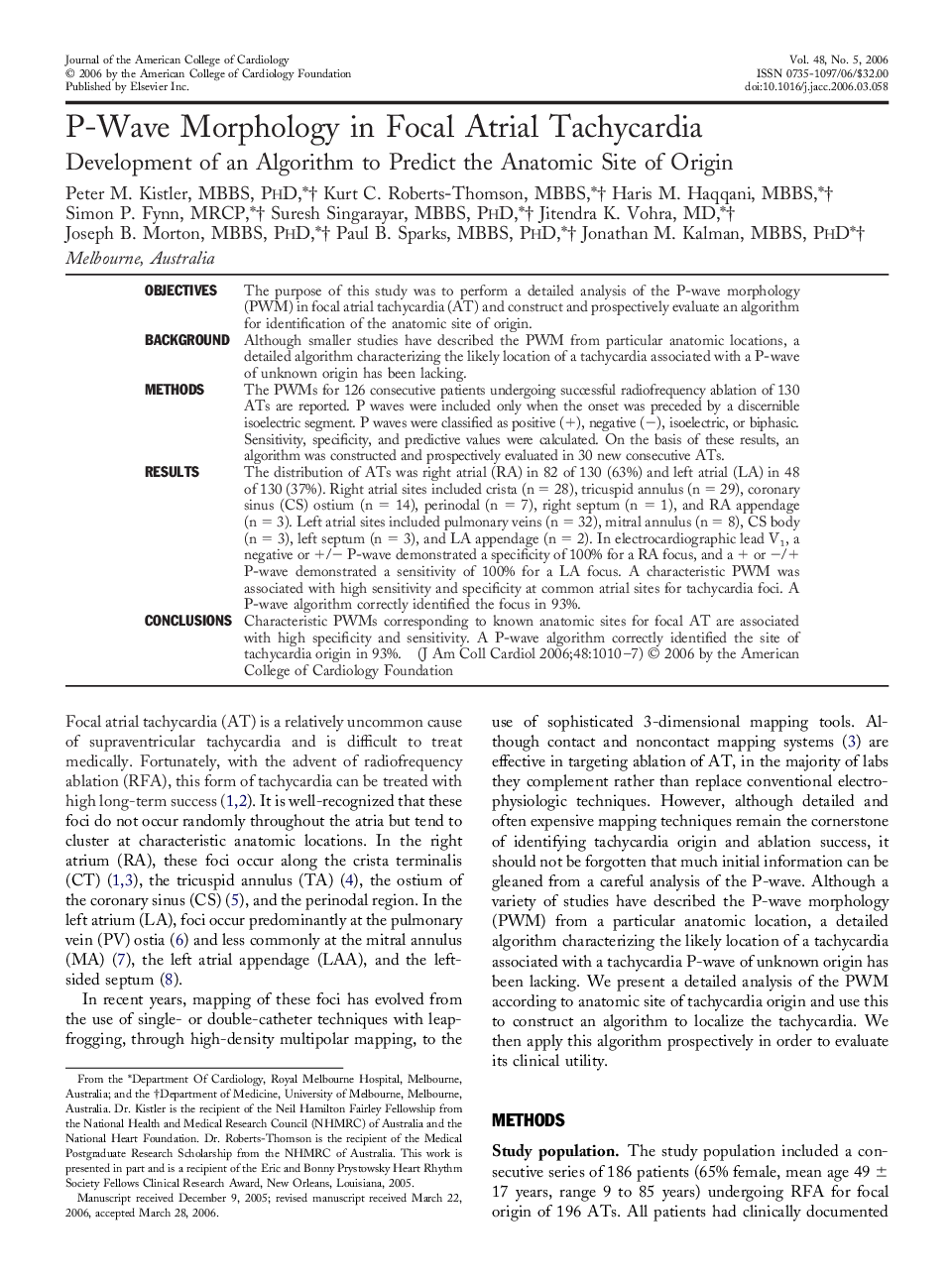| کد مقاله | کد نشریه | سال انتشار | مقاله انگلیسی | نسخه تمام متن |
|---|---|---|---|---|
| 2953668 | 1577504 | 2006 | 8 صفحه PDF | دانلود رایگان |

ObjectivesThe purpose of this study was to perform a detailed analysis of the P-wave morphology (PWM) in focal atrial tachycardia (AT) and construct and prospectively evaluate an algorithm for identification of the anatomic site of origin.BackgroundAlthough smaller studies have described the PWM from particular anatomic locations, a detailed algorithm characterizing the likely location of a tachycardia associated with a P-wave of unknown origin has been lacking.MethodsThe PWMs for 126 consecutive patients undergoing successful radiofrequency ablation of 130 ATs are reported. P waves were included only when the onset was preceded by a discernible isoelectric segment. P waves were classified as positive (+), negative (−), isoelectric, or biphasic. Sensitivity, specificity, and predictive values were calculated. On the basis of these results, an algorithm was constructed and prospectively evaluated in 30 new consecutive ATs.ResultsThe distribution of ATs was right atrial (RA) in 82 of 130 (63%) and left atrial (LA) in 48 of 130 (37%). Right atrial sites included crista (n = 28), tricuspid annulus (n = 29), coronary sinus (CS) ostium (n = 14), perinodal (n = 7), right septum (n = 1), and RA appendage (n = 3). Left atrial sites included pulmonary veins (n = 32), mitral annulus (n = 8), CS body (n = 3), left septum (n = 3), and LA appendage (n = 2). In electrocardiographic lead V1, a negative or +/− P-wave demonstrated a specificity of 100% for a RA focus, and a + or −/+ P-wave demonstrated a sensitivity of 100% for a LA focus. A characteristic PWM was associated with high sensitivity and specificity at common atrial sites for tachycardia foci. A P-wave algorithm correctly identified the focus in 93%.ConclusionsCharacteristic PWMs corresponding to known anatomic sites for focal AT are associated with high specificity and sensitivity. A P-wave algorithm correctly identified the site of tachycardia origin in 93%.
Journal: Journal of the American College of Cardiology - Volume 48, Issue 5, 5 September 2006, Pages 1010–1017